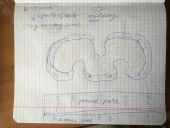


Solar Station Construction Plans by Ben Peterson -- ebook
will be released to subscribers in:
soon!



 1
1








property in Tas, Australia. Sandy / river silt soil.low ph. No nutrients due to leaching. Grazing country. Own water source. Zone 9b.








 1
1








Emily Gilquist wrote:So the questions are:
1) how do I reclaim them from grass?




Emily Gilquist wrote:Thanks for the ideas, guys!
George, doesn't covering the grass with hay lead to more grass seeds -> more grass? I could see straw working. I'll likely end up piling compost and straw on top of the whole thing. More biomass for all!
I found out today that the whole thing has been planted with clover and Jerusalem artichokes already. I guess it's not as hopeless as I imagined!

|
Uh oh. Gotta go. Here, you read this tiny ad. Bye!
Freaky Cheap Heat - 2 hour movie - HD streaming
https://permies.com/wiki/238453/Freaky-Cheap-Heat-hour-movie
|






